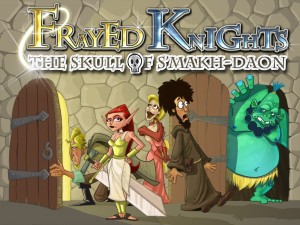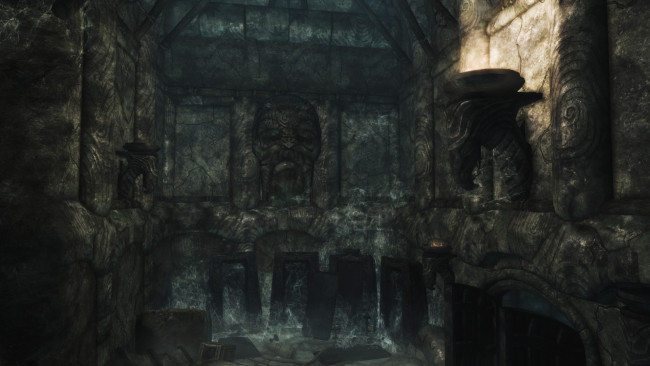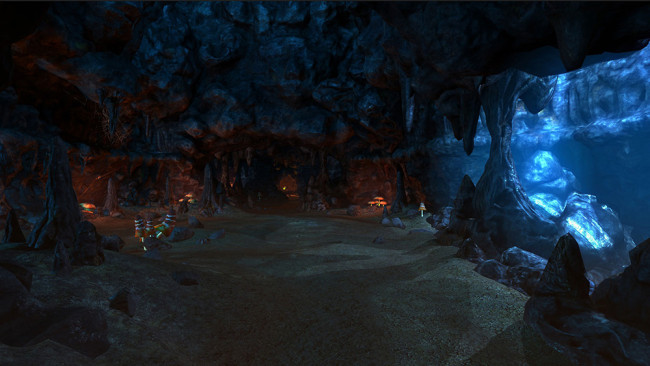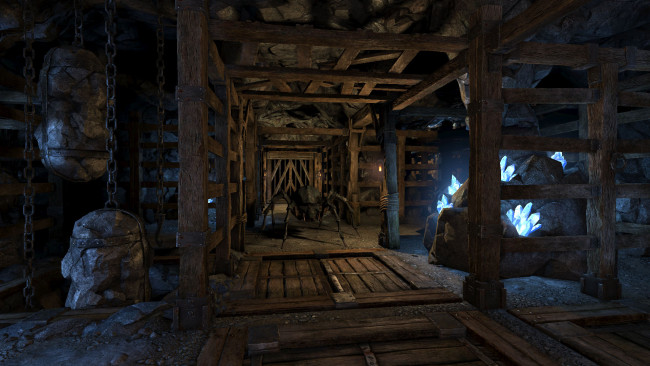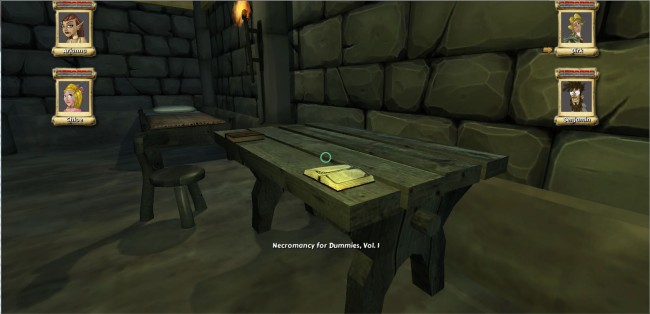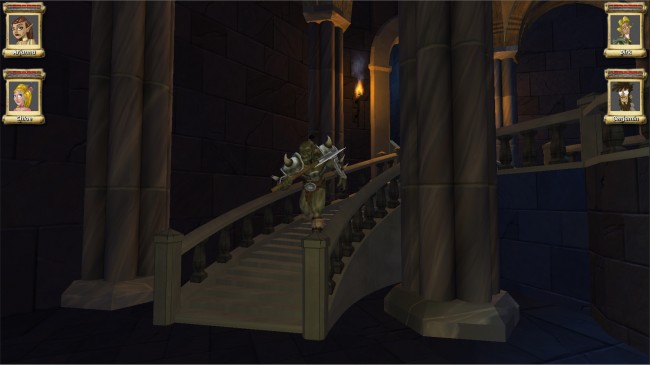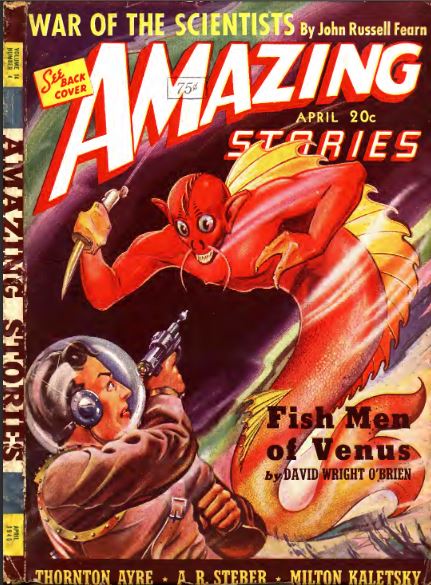The Disposable Personal Computer is Finally Here
Posted by Rampant Coyote on December 1, 2015
 My first computer was a less-than-$200 Sinclair ZX80 my dad picked up from a trade show. It had 1K of RAM and one of the cheapest CPUs of the era. He knew I was interested in computers, and it was the cheapest machine there, I guess. (BTW, in that picture to the right, that’s not actually venting on top. Those were just decorations made to look like venting.)
My first computer was a less-than-$200 Sinclair ZX80 my dad picked up from a trade show. It had 1K of RAM and one of the cheapest CPUs of the era. He knew I was interested in computers, and it was the cheapest machine there, I guess. (BTW, in that picture to the right, that’s not actually venting on top. Those were just decorations made to look like venting.)
My dad joked that at this rate, if they got much cheaper they’d be able to make them a prize inside cereal boxes.
Well, we never quite got there, although the next generation of that computer – the Zx81 (distributed here in the U.S. by Timex, becoming the Timex / Sinclair 1000) – ended up selling for even less. In fact, that kinda launched the big price-wars for “home computers” of the era, eventually going for a bargain-basement price of $50. Adjusted for inflation, that was about $120 in today’s currency. Pretty dang cheap, still.
And short of used computers, you really didn’t get much cheaper than that for a long time.
But the guys at Raspberry Pi shot for a lot less. Following in the footsteps of the old hobbyist tradition of the original Apple 1 board and the Altair kits, their solution requires some assembly. It’s just a board, containing all the key components of a computer with plugs for anything it might be used for. Like a Micro-SD slot for secondary storage. USB ports to plug in a keyboard (hey, at least the TS1000 and the VIC-20 came with a keyboard!). That kind of thing. But they got the original price down below $40. Some models under $30. VERY impressive. And they’ve been improving the line over time with several models.
 For their latest model, however, they decided to focus not on making it more powerful, but making it cheaper. Lots cheaper. Like… a $5 computer. The Raspberry Pi Zero costs about as much as the cheap 3-foot HDMI cable you’d use to hook it up to a TV (not including the mini-HDMI to HDMI adapter), and half the price of a cheap USB keyboard you’d plug into it. When you can get a full computer for the price of a Big Mac, the era of disposable computers has arrived.
For their latest model, however, they decided to focus not on making it more powerful, but making it cheaper. Lots cheaper. Like… a $5 computer. The Raspberry Pi Zero costs about as much as the cheap 3-foot HDMI cable you’d use to hook it up to a TV (not including the mini-HDMI to HDMI adapter), and half the price of a cheap USB keyboard you’d plug into it. When you can get a full computer for the price of a Big Mac, the era of disposable computers has arrived.
And while it wasn’t put inside a cereal box, they did tape them up onto the cover of their official magazine, MagPI, for free with the magazine. Close enough.
This little $5 computer would put my home computers of the 1980s to shame. Actually, it’d put my PCs from the 1990s to shame, too. It’s got a 1 Ghz CPU, 512 megs of RAM, mini-HDMI, a microSD slot, micro USB slots, and a size of about half that of a credit card. It’s no-frills, lacking built-in ethernet or a graphics processor. When all is said and done, as a general purpose computer, you’ll probably be out another $30 for a powered USB hub, cables, a microSD card, and a cheap keyboard and power supply. Oh, yeah, and might want a case. And that doesn’t include a monitor to plug it into.
But the point is … you don’t necessarily need all that. So what can you do with the thing? What would *I* do with the thing?
Honestly, I don’t know. I want one. I want a half-dozen. But I have absolutely no idea what I’d do with them. My initial reaction is to load up a Commodore 64 emulator and pretend its 1983 all over again, but once I did that, it would maintain my interest for about ten minutes.
Something like this isn’t really for use as your general desktop computer, like the old days. Unless you are in a place where $5 is a lot of money, I guess, and a full-fledged modern PC is beyond your price range. But here, for me, this is a computer for where having a computer isn’t the objective – you need something more than just a programmable controller (like an Arduino), but something tiny and cheap and dedicated to a particular purpose: The brains of a mobile robot. The core of an arcade or console emulation system. The brains of a “smart” appliance or home automation. Or just a really simple and straightforward computer to learn to program on, like we had back in the 80’s. Some people have turned other models of the board into a dedicated server for Minecraft or a media server. Someone even turned it into a wall-mounted calendar running Google Calendar.
As far as gaming on the Raspberry Pi, it doesn’t look like a lucrative market. While games development is certainly possible, and there are a few dozen games out for it (all free, at least at the Raspberry Pi store), the main focus of Pi-powered gaming seems to be emulation. As a fan of retro-gaming, this is a worthy cause in my book. With the deluge of mobile games and a lackluster market for microconsoles, I don’t yet see a big niche for making games for the device, or making a gaming system with the Raspberry Pi as the core. But I’d like to. Just because I’m dumb that way.
Incidentally, the picture above and to the right (not mine, just a meme that came out this weekend) compares the installation of the first municipal computer in Britani with the Raspberry Pi Zero. In 1957, the Elliott 405 had about 16 k of RAM (on a rotating drum) with a smaller, faster drum containing a 1.2 k cache for the processor. Secondary storage was a reel-to-reel tape which held about 1.2 megabytes on a 1000-foot spool… about the capacity of a “High Density” 5.25″ floppy diskette. Depending on the configuration, it probably cost around 100,000 pounds, or $275,000 in U.S. Dollars. Adjusted for inflation, that would be about $2.3 million in today’s dollars. The $5 Raspberry Pi zero is tiny, has 512 megs of onboard RAM, and for $10 can slot a 32 gig microSD that can hold more data than 27000 thousand-foot reel-to-reel tapes.
Cool, huh?
Filed Under: Tech - Comments: Read the First Comment
The “I Made This” Bias
Posted by Rampant Coyote on November 30, 2015
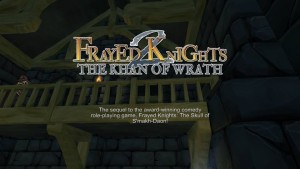 Frayed Knights 2 has elevators. Not many, as it’s a medieval fantasy game, so I don’t want to go overboard with them. They’d require either sophisticated engineering or sophisticated wizardry to operate, and not many areas warrant that.
Frayed Knights 2 has elevators. Not many, as it’s a medieval fantasy game, so I don’t want to go overboard with them. They’d require either sophisticated engineering or sophisticated wizardry to operate, and not many areas warrant that.
I wrote some classes and scripts which makes it easy to add an elevator and controls to the game. It wasn’t much work. Making the code generic and reusable takes a bit longer than making a one-off function, but we’re talking maybe a couple of hours of work total, including testing. Small potatoes – really one of the simpler pieces of code I’ve written for the game. Fairly trivial.
And yet I find myself overly pleased by my dumb elevators. As I’m testing my levels, I’m going up and down the elevators doing the mental equivalent of saying “WHEE!” in my head a little too much. There’s no reason. What I’ve done wasn’t exceptional, and there have been elevators littering levels of FPS games since the dawn of Doom, so there’s absolutely nothing original here.
Except… I made it. Somehow that makes everything cooler. Ditto for things my friends make. I read their stories or play their games without seeing their hands at work making it, or hearing their voice behind the words, even when I’m trying hard to be critical.
That’s a danger. And that’s also an issue with the indie games glut right now, especially first-time indies. When the barrier to entry is low, and no one’s permission needs to be granted before releasing a product to the public (both GREAT things, IMO), it’s easy to just toss stuff over the fence without really taking the time to analyze how it could succeed in the marketplace. . In the developer’s mind, their clone of <Insert Title here> is the best thing ever, even when they are trying their best to be critical of it. There’s already a subconscious Unique Selling Point (USP) that trumps everything else.
Making an RPG (especially one with a custom engine) can be a pretty huge undertaking. It’s a major accomplishment. Once upon a time, that might have been enough, especially a few years ago when there was a dearth of good computer role-playing games. But those days are over. If I go to Steam and search for Indie RPGs, there are nearly 1000 results. Even if not all of those are what I’d properly call an RPG, that’s a ton of games for any one game to stand out in.
Unless your name is Sid Meier or something like that, just the fact that you made this game isn’t going to be enough. One trick to combat this bias is to come up with something of a marketing plan – or even just a blurb – from the get-go, during the design phase. What cool things can you say in your description of the game or what screenshots do you want to be able to show when the game is done that would really make the game stand out and would make you, the customer, want to buy it if it was available today? Now go make THAT game.
Filed Under: Game Development - Comments: Comments are off for this article
Massive Xchyler Publishing EBook Sale
Posted by Rampant Coyote on November 27, 2015
I believe this is the first time they’ve done this, but Xchyler Publishing is discounting *everything* for this weekend for the Kindle editions… starting today (so-called “Black Friday”) through Monday (“Cyber Monday”). That includes the most recent anthology, Beyond the Wail, which includes one of my stories. I also have stories in two steampunk anthologies, Terra Mechanica and Mechanized Masterpieces 2. This is only on Amazon (sorry non-Amazon) and only on the Kindle editions.
I still consider paper editions my “preferred” editions of books … but my over-stuffed bookshelves beg to differ. I gotta admit, it’s handy going around with a sizeable library of reading material in my pocket and on my Nexus 10. I didn’t think I’d use my tablet for much outside of travel, but I do – mainly for gaming and reading. I do some ebook reading on my desktop too, but it’s extra-nice to be able to still read from my recliner. 🙂
Anyway, you can shop the entire Xchyler library here.
You can get more information on the books here.
And they’ve got a promo video here:
Enjoy!
Filed Under: Books, Deals - Comments: Comments are off for this article
Why be Thankful?
Posted by Rampant Coyote on November 26, 2015
Happy Thanksgiving!
For those not in the U.S. – Happy Thursday!
Today is a day of gratitude here in the U.S., and I’ve got a lot to be grateful for. It’s also a nice little vacation. My eldest daughter is home this weekend from school, which is awesome. And what does she want to do this weekend? PLAY VIDEO GAMES. Among other things, but that’s a high one on her list. I don’t know where she picked up that habit… 😉 I have some days off of the day job, which I intend to spend working on Frayed Knights 2, but I’ll probably spend just as much or more time enjoying time with friends and family. We have a lot going on. Sitting back and slinging dice with my friends and my kids in board games and RPGs is a great way to recharge the ol’ batteries.
There’s plenty to gripe about and a lot of thing going on in the world to be seriously worried about. But I set a goal a few years ago to try to focus on the positive. There’s a spiritual aspect of this, but stripping that part out, it’s still based on a reasonable belief that you will tend to drift towards that which you focus on. If you focus on the good stuff in life and the opportunities that are available, you’ll find more of them. They may have been there all along, but you’ll be more attuned to seeing them – and thereby take advantage of them.
So yeah, being thankful and a little bit of an optimist may have benefits in life. Something to think about… 🙂
Filed Under: General - Comments: Read the First Comment
The Steam Fall Sale Has Begun
Posted by Rampant Coyote on November 25, 2015
Kiss your wallet goodbye. Again. Note that there’s no special daily deals offered this time around. Just one big happy sale for a few days.
Oh, and BTW…. Frayed Knights: The Skull of S’makh-Daon is discounted.
Filed Under: Deals - Comments: Comments are off for this article
Frayed Knights: Building Dungeons
Posted by Rampant Coyote on November 24, 2015
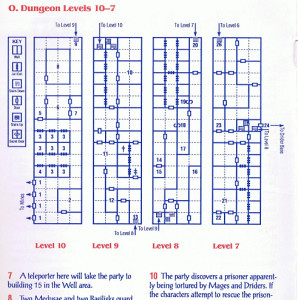 I’m in the middle of building dungeons for Frayed Knights 2: The Khan of Wrath. I stress over this. A lot. Way more than I should. You’d think that after decades of being a dice & paper game master making adventures, playing lots of CRPGs, decades of game design and development, and a full-fledged award-winning RPG under my belt that it’d be a snap. That’s what I keep thinking it should be. But it’s not, and it’s a mental thing. Or a pride thing. A lack-of-confidence thing?
I’m in the middle of building dungeons for Frayed Knights 2: The Khan of Wrath. I stress over this. A lot. Way more than I should. You’d think that after decades of being a dice & paper game master making adventures, playing lots of CRPGs, decades of game design and development, and a full-fledged award-winning RPG under my belt that it’d be a snap. That’s what I keep thinking it should be. But it’s not, and it’s a mental thing. Or a pride thing. A lack-of-confidence thing?
Running my friends through a published adventure module the other night, I looked at the map and thought, “You know, what I make is much better than this. This is fun, and this is the kind of experience I’m going for, right? What’s the problem? Why should I stress out about it?”
Well, yeah. Compared to maps which are only a tool for the game master, or to the old gridded maps of the games that were my inspirations for the game (like the one from Secret of the Silver Blades, above), sure. But actually being able to see these areas and play them in a game that wasn’t made before Bill Clinton was in office means I have to do something more with them, even on an indie budget. I’m still competing with stuff like this, and better:
(The Elder Scrolls V: Skyrim)
Yeah, on my budget, that ain’t happening. Even some of the semi-recent lower-budget stuff that’s limited to an axis-aligned grid looks pretty amazing:
(Might & Magic X: Legacy)
(Legend of Grimrock 2)
Yeah. Not gonna get there, as much as I would like to. Visually, we can make the dungeons look nice, but we have to compete on other fronts. We can do some very interesting things with them, which I’m very excited about. Navigating each dungeon in Frayed Knights 2 is like a story unto itself, with lots of interactions and different types of encounters.
But… it’s intimidating. I find myself under a lot of self-inflicted pressure. I shouldn’t. I should just have fun with it. I keep telling myself that.
Fortunately, I do. When I’m cutting loose and no longer worrying about how I’m stacking up with everybody else out there, I really am having fun. Working out the storylines, the flow, and trying to make each dungeon be a stand-alone, self-contained adventure in it’s own right isn’t easy. I want them to be a unique experience not found in other CRPGs. I can’t just throw some rooms in there and stock them with random encounters. I find myself agonizing over seemingly minor details.
But I’m having fun. This is the part I look forward to, the part I imagine when I think about “making RPGs.” Building the world… the playgrounds. It is fun. Having fun means I’m being more productive, and I think players will have more fun too.
So… onward. More dungeons. More interactivity. More puzzles. More interesting combats. More traps. More amusing dialog. More secrets. More story. More fun. That’s the goal.
Filed Under: Frayed Knights - Comments: 9 Comments to Read
20 Classic CRPGs Every Designer Should Play
Posted by Rampant Coyote on November 23, 2015
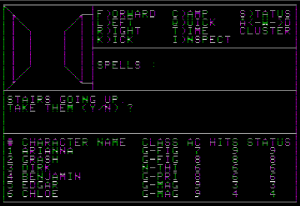 Gamasutra reposted (re-advertised?) a classic but excellent article about 20 essential computer role-playing games (and a bonus non-computerized game) that every game designer (particularly RPG designers) should play.
Gamasutra reposted (re-advertised?) a classic but excellent article about 20 essential computer role-playing games (and a bonus non-computerized game) that every game designer (particularly RPG designers) should play.
Game Design Essentials: 20 RPGs
If you haven’t read it yet, or are just idly curious, the games are: Dungeons & Dragons (tabletop), Wizardry, Ultima, Wasteland, the “Gold Box” D&D series, Quest for Glory, Might & Magic, Nethack, The Elder Scrolls, Baldur’s Gate, World of Warcraft, Dragon Quest, Dragon Slayer, Fire Emblem, Final Fantasy, Mother (Earthbound), Pokémon, Mystery Dungeon, Square’s 16-bit RPGs (like Chrono Trigger), Tales series, Nippon Ichi RPGs, and then a slew of bonus games worth mentioning (Bard’s Tale, Eye of the Beholder, Dwarf Fortress, ADOM, Planescape: Torment, and others. You’ll probably note that most of these are a series. Although Fallout is mention in relation to Wasteland, the series is kind of conspicuous by its absence.
The meat of the article isn’t the what, though… it’s the why. And for that reason, it’s well worth (re-)reading.
The article was originally released in 2009, so we’ve had six more years of role-playing game releases to play in more recent years. The Demon Souls series has made a significant splash since then. And we’ve basically had a giant indie invasion of some very noteworthy titles worthy of analysis since then, like Divinity: Original Sin, Age of Decadence, a sequel to Wasteland (making it a series!), Pillars of Eternity (which more-or-less fits in as a successor to the Baldur’s Gate series…), and more. I’d also like to see the Persona series on the list. I’m not sure what these new additions would replace, though.
The thing is, even studying some of the bad examples (unless they are totally derivative) can be pretty useful. Maybe more so… like housework, it’s easier to notice when it’s not been done or done right then when it’s been done well.
Filed Under: Design, Retro - Comments: Comments are off for this article
International Game Day Event at the Viridian
Posted by Rampant Coyote on November 20, 2015
Another one for Utah locals. I won’t be at this one, but many of my fellow indies will be. Tomorrow is International Game Day at the Viridian Events Center in West Jordan, Utah. While board games are a focus, it’s not exclusive:
“International Games Day is Saturday, November 21st from 10:00 am to 10:00 pm at the Library’s Viridian Event Center. This special gaming event is suitable for the whole family, some come explore new, exciting, popular, and award-winning games. There will be a huge gaming library for all ages and gaming levels to choose from and play for free. Presented in partnership with Fongo Bongo Games and SaltCon.”
Filed Under: Events - Comments: Comments are off for this article
Virtual Reality Horror and the Potential for Subtlety
Posted by Rampant Coyote on November 19, 2015
With consumer Virtual Reality on the horizon, PEGI is considering changing its rating systems to handle VR horror. The reason? Horror in VR is likely to far more intense than horror on a wide-screen video game (which is, in turn, more intense than horror in a movie).
Based on my limited VR experience, I’d assume that yeah, the intensity levels are going to go way up. There seems to be dozens of VR-based horror games in development right now, so it seems that it’s not an unusual opinion.
VR is a surprisingly different experience from other types of games, including “first person” games. The borders of the screen provide an unexpectedly powerful anchor to the real world that I aren’t noticeable until they are gone. At least in my brain, VR transforms the experience from playing a game in a world that exists behind the screen to being “in” the game world. That’s what it feels like. All the efforts to provide “immersion” with a 27-inch screen seem adorable by comparison. Sure, playing with the lights off and headphones on helps a lot… but it’s not the same.
We’ve come a long way in the last few years with figuring out how to do horror in video games. The result works, although to my disappointment it tends to depend on heavily scripted sequences and jump scares. Subtle is not something that works very well in video games, and although the best horror games have learned to utilize subtlety to build the big scares, they still rely on the good old-fashioned jumps. The equivalent of those stories like “Taily-Po” and “Golden Arm,” with a mixture of in-your-face gore.
With VR, the intensity gets ramped up. Two of your most major senses get hijacked with simulation, which is enough for your subconscious brain to accept it all as real even as your thinking brain says it’s not. When it comes to emotion and instinctive / trained reactions, that subconscious guy is in the driver’s seat. That’s a lot of power.
Already, people are talking about when (not if) the first person dies of fright from a VR game. It happens at amusement parks, and not always for people with known heart conditions.
But here’s my thought: If the intensity scale does go up, does that mean that the more subtle levels that barely register in a standard game might now become significant? Or even too intense?
At this point, it seems that VR experiences are trending that way – smaller areas with more detailed experiences. With less emphasis on whizzing past scenery at high-speed dodging bullets in high-speed action games, maybe there’s finally a place for doing the dramatic and subtle. In horror games, instead of in-your-face monsters, we can finally have just plain creepy and disturbing. More Twilight Zone or The Others, less Saw.
If I get the chance, that’d be one kind of game I’d love to make in VR.
Filed Under: Indie Horror Games, Virtual Reality - Comments: Read the First Comment
Retro-Reading: Pulp Fiction and Fish Men of Venus
Posted by Rampant Coyote on November 18, 2015
When I saw the April 1940 cover over at the Amazing Stories magazine digital archive, I had to read it. “Fish Men of Venus.” How could I not? It’s like Mystery Science Theater 3000 fodder, but in short-story form. And considering my mood over the weekend, I really needed a story about fish-men from Venus.
SPOILER WARNING! – It was just as awesome and as bad as I imagined it. Which is to say, pretty much standard pulp fair, and nothing that would be likely to pass editorial muster today from a reputable publisher. But it’s nowhere near Eye of Argon bad, and not as bad as some of the crap you can find self-published on Amazon these days. (BTW, that is NOT a dig at self-published books… just that, as with all things indie, the lack of gatekeepers means both wonderful and terrible things.)
This was published long after the magazine had changed hands and was no longer being edited by Hugo Gernsback (of whom the Hugo awards are named), but had instead had embraced the conventional pulp stories Gernsback avoided. The author was a young man and the nephew of one of the pulp editors. Sadly, he died only a few years later, in World War II, killed in a bombing raid over Berlin.
Many of the problems stem from a dated style and use of language, like the use of passive voice (one of my own worst vices!) and quaint word choice. I don’t think I’d want to read a modern story involving a “vibrator pistol.” And of course, technology and science change. It’s hard to accept the idea today of Venus being covered with oceans and populated by fish-people. And some of is just downright implausible, like the part where, being held at gunpoint the hero managed to move to the wall, grab a previously unmentioned fire extinguisher, and hit his captor over the head with it. How he managed to do all that in less time than it would take to pull a trigger, I don’t know. And there’s the whole idea of everybody being convinced by a confession obtained under duress and a death threat.
But whatevah. Not every pulp writer could be Heinlein, Lovecraft, Burroughs, or Chandler. And had David O’Brien survived the war and continued his writing career, maybe his work would have improved. Partly because of these regular periodicals full of short stories, the entire art form evolved and generally improved over time. Those lessons were learned in a competitive marketplace before the advent of other forms of entertainment – particularly paperback novels, comic books, and television.
The pulps were, by their nature, the low-end of the writing / reading scale. Which isn’t to say their stories were necessarily inferior, and it certainly doesn’t mean the writers were. But they bought the stories on the cheap, manufactured magazines with the cheapest-quality paper they could, and sold it at a price that undercut the “slicks.” And at one point, particularly between the world wars, they dominated the newsstands. At the time, writers(often with several pseudonyms) might shop a story around to higher-paying venues first, but if there were no bites there, they could sell to the pulps.
 Just as I like retro-gaming, I enjoy some retro-reading, too. While I can’t say I’ve uncovered a ton of lost gems or anything, I’ve discovered some fun little stories in some forgotten genres. Like… aviation stories! There was a whole genre of aviator fiction back in the early 20th century. This was from the days when flying was new and pioneering, and Charles Lindbergh was a hero. Awesome-sauce.
Just as I like retro-gaming, I enjoy some retro-reading, too. While I can’t say I’ve uncovered a ton of lost gems or anything, I’ve discovered some fun little stories in some forgotten genres. Like… aviation stories! There was a whole genre of aviator fiction back in the early 20th century. This was from the days when flying was new and pioneering, and Charles Lindbergh was a hero. Awesome-sauce.
I guess that was another advantage of the pulps… they were cheap enough to go after a niche.
Is there any value reading these old stories? I would assume so. I would hope so. I know there are some gems out there – after all, I grew up reading the works of Robert E. Howard and H. P. Lovecraft, both pulp authors. And I’m a more recent fan of Richard Matheson, who also wrote for pulps in the early days.
I don’t know if the pulps are full of fresh ideas – they certainly fell into their own ruts – but there are some very inventive and weird ideas, just as there are today. Maybe to modern eyes, they feel fresh, but I can’t say the modern “genre fiction” field feels staid and stuck in a rut. At least not the stuff I read. Maybe I’m just not jaded enough yet. But the older stories do have a different feel, and a different language. They can still be fun to read.
And I don’t think there are many modern stories being written about Fish-Men of Venus. So there’s that.
Filed Under: Books - Comments: Comments are off for this article
Rocksmith: Bachsmith II
Posted by Rampant Coyote on November 17, 2015
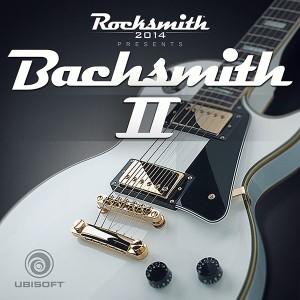 You’ve probably heard me raving about Rockmith 2014 before, and are probably either sick of it or maybe you already play it. Anyway – it’s cool, I’m still playing, and still improving. Not as much as I’d like, but then, I’m not putting in more than about a half-hour a day into it, either. But I’m about where you’d expect someone to be… I think… after practicing casually for two years, averaging about 40 minutes a day (a little less the last few months). Most of my guitar-practicing time is still with Rocksmith, but I can be found playing unplugged with either my electric or my acoustic practicing riffs or exercises.
You’ve probably heard me raving about Rockmith 2014 before, and are probably either sick of it or maybe you already play it. Anyway – it’s cool, I’m still playing, and still improving. Not as much as I’d like, but then, I’m not putting in more than about a half-hour a day into it, either. But I’m about where you’d expect someone to be… I think… after practicing casually for two years, averaging about 40 minutes a day (a little less the last few months). Most of my guitar-practicing time is still with Rocksmith, but I can be found playing unplugged with either my electric or my acoustic practicing riffs or exercises.
This week’s DLC release is a follow-up to last year’s in-house hit, Bachsmith. They arranged and recorded their own rock arrangements of classical music for a downloadable pack. The arrangements emphasized the learning of some techniques, but they were still pretty fun. This year, they did it again.
The arrangements run across all musical styles, but includes Beethoven’s Ode to Joy, Tchaikovsky’s Nutcracker Suite (called the “Notecracker Medley”), Mozart’s Symphony Number 40, Chopin’s Funeral March (which looks like the easy one of the bunch), and Offenbach’s The Can-Can. The styles this time are… well, they are a bit more all over the board than the last one. I guess if you want to make sure you practice a variety of styles (still anchored but straying a bit more from straight up rock), it’s a good challenge. The Can-Can seems to incorporate a variety of styles all by itself…
Okay, none are my first choice for what would be in the pack. I’d probably like… I dunno… something like JerryC’s version of Pachelbel’s Canon, a guitar arrangement of Bach’s Toccata & Fugue in D minor, Flight of the Bumblebee (like I’d be able to play that one!), etc. But these sound pretty fun to me overall. It seems like they went for more playful arrangements this time around.
So far the Tchaikovsky arrangements sounds like the most interesting of the mix… but then, it’s a medley.
Anyway, it’s pretty cheap for a 5-song pack, but then they don’t have to pay licenses. If you are a Rocksmith 2014 fan, it’s probably worth checking out.
Filed Under: Guitar Games - Comments: Comments are off for this article
RPG Design: The More You Know, the More You Know to Zip It
Posted by Rampant Coyote on November 16, 2015
I was a lot more opinionated about RPG design a few years ago. I talked a lot more about experimental design ideas, pushed a lot more concepts that really went far outside the bounds (well, I thought they did, anyway) of conventional design. I’ve come to realize I don’t do that so much these days. I’ve become a little bit more conservative with my ideas.
Why is this? I mean, shouldn’t we always be pushing the boundaries of the genre, doing newer and cooler and more interesting things? Absolutely! But I think these are the reasons I’ve toned down some of my bolder statements of how things ought to be:
#1 – Experience
Now that I’ve gone through the experience of building a commercial computer role-playing game, I’m a bit older and wiser. I realize that you have to pick your battles. People crave familiarity as much as they crave novelty. You have to find a good mix. Pick what to change, what to try, and what fundamentals to stick with. But a lot of it is just having a broader understanding of why designers have made the choices they did… because I’ve had to make the same choices.
#2 – I’ve tried them
I’ve tried some of these weird ideas, and in some cases I’ve learned… they suck. Or at least, the way I tried them didn’t show promise. This makes sense. “Experimental” and “innovation” are words that imply a high likelihood of failure. I’m glad I experimented. I might try another approach to do the same thing. Or not. There’s nothing like actually trying and seeing how stupid your idea was.
#3 – The genre has already expanded
Seriously… CRPGs are in a much, much better state now than when I was ranting about them almost a decade ago. People are doing some cool, innovative things. The competition is fostering a lot of different approaches to role-playing games, from turn-based tactical dungeon crawlers to roguelikes to action shooters with heavy RPG elements to weird strategy hybrids to old-school throwbacks. I’m no longer nearly as frustrated seeing the genre stuck in the mainstream rut it was in during the mid 00’s.
#4 – Experimental is everywhere
Not only in RPGs, there is a ton of experimental gameplay happening out there right now. With the indie revolution, experimental is almost the only way to get noticed these days. And yeah – a lot of it doesn’t really pan out. But from the perspective of desiring a healthy hobby, rampant exploration and experimentation full of bad ideas is preferable to stagnation.
#5 – I’ve been humbled
This just comes with the experience, but it’s a little more than that. It’s easy to be a legend in your own mind and see what everyone else is doing wrong when you haven’t had to put your money where your mouth is. Facing an uncaring reality with your product and having to develop a thick skin to criticisms can change that. Even when what you’ve done has won awards and tons of praise, one word of criticism tends to counter hundreds of words of praise, and dealing with an overall market apathy towards your work – people not knowing or caring – is almost as hard. But it does help ground you in reality, and help you recognize that there’s nothing magical about your opinion.
#6 – Seeing Lots of Perspectives
You can look at any poll, and something like 5% of the respondents will go with the most ludicrous response available. But even if there’s a clear-cut preference, there’s going to be significant number of people who think poorly of it. Getting outside of your own bubble and dealing with lots of people with different preferences helps you realize that there are a whole lot of different yet perfectly valid views. Not all mesh with your own, but that makes them no less worthy. That makes it a lot harder to think in absolutes. I can rant all day about how to make better non-combat challenges, but then there are a lot of people who really just want more exciting fights.
#7 – Ideas aren’t unique
I wasn’t the only one feeling the same frustration several years ago, and now a whole lot of indies (and mainstream devs) are doing something about it. Now that there are lots of RPGs out there, with more coming out every month, it’s clear that a lot of people are pondering the same kinds of ideas. It’s not like one person is getting blessed with all the revelation on how to push the genre forward. A lot of ’em are better than mine.
#8 – Deeds not words
And finally… now that I’m making role-playing games and being able to live out the indie dream, I find that I’m happier actually implementing these ideas rather than talking about them. If I remember, I might talk about them later.
So yeah, I still want to do bold, creative, and possibly dangerous things. I’ve got a lot of ideas. More than I’ll have time to turn into games in my lifetime. I’ll still throw ideas out there. But I’m much happier doing stuff about it instead of just complaining.
Filed Under: Design - Comments: 3 Comments to Read
The Void: Welcome to the Future
Posted by Rampant Coyote on November 13, 2015
 “We played the VR game Dactyl Nightmare back in the 90’s,” I tell the girl who is helping us suit up. “It made us sick.”
“We played the VR game Dactyl Nightmare back in the 90’s,” I tell the girl who is helping us suit up. “It made us sick.”
“That won’t happen now,” she says, and then corrects herself. “I won’t say it never happens, but it almost never happens. This is very different, and it isn’t even the final hardware. The real hardware’s going to be even better.”
They keep reminding my wife and I of the fact that none of this is final. Everything will eventually be better. Are they lowering our expectations?
Yes, we’re really just playing through a tech demo of The Void, a new virtual reality experience currently in development in Lindon, Utah. A beta. The demo that we’re running through fits in an area only one quarter of the size of the real “pods” when they open to the public months from now. The experience is only going to be a few minutes long, not the half-hour session they are have in development. Things are supposed to be much, much better in the future.
“The future?” We’re outfitted with backpacks fitted with top-end portable computers, and helmets with 3D high-resolution goggles (although not as high-resolution as the final set, we’ve been reminded), and headphones. We’re about to visit a reality-augmented computer-controlled virtual fantasy world. It sure sounds like we’re living in “the future” right now.
What can be seen from the platform doesn’t look impressive, with black-painted plywood walls and some other equipment shrouded in darkness. I suppose they really don’t need much in the way of light here–with our equipment, we’re going to effectively be blind to the real world, anyway.
As the goggles go over our eyes, we stand in total darkness for several seconds. An attendant puts rifles in our hands. At least, I think it is a rifle. I can only feel it. It’s very lightweight – clearly a prop – but it’s shaped like a rifle and bears a few buttons around it. I have no idea how many. “Only use the trigger for now,” he explains, ” the other buttons don’t do anything right now.”
Then a light appears in front of my eyes. There’s nothing there – just a light. I try to focus my eyes on this, adjusting to the pixelized “screen door” effect of the goggles (an effect that will be reduced in the final hardware, we’ve been promised). Then a picture forms. I find myself standing in… nowhere. I guess that would be a void. There are strange cubes floating around in random directions. And… my rifle. Floating out in space, oriented wherever I move it, held by my now-invisible hands.
I look over to my left. There’s a soldier in battle armor next to me, face concealed in a high-tech helmet. The soldier is a little shorter than me.
“Julie, is that you?” I ask her.
She answers. I hear her answer in the real world, followed a half-second later by her answer in my headphones. “Yes! This is wild!”
The soldier moves around, following Julie’s small shifts in position. It moves like a video game character, feet skating a little in the emptiness as it tries to pose in the virtual space occupied by her real body, but it’s her.
A target appears in the middle of this weird cube-space, and we’re encouraged to shoot at it, to get a feel for our weapons. I fiddle around with different ways of aiming for a few seconds, but it’s ridiculously easy to hit wherever I’m aiming. It all feels… exactly right. Point and shoot. The guns respond with energy blasts exactly as I’d expect, with full sound and 3D visuals in front of me.
The target disappears. “I’m opening up a portal for you now,” the woman says in our ears. “Go through when I say.”
Before us, a black rectangle forms in mid-air. “Go ahead,” the woman tells us.
I can’t help myself. Holding my rifle in my right hand, I reach out with my left. Wasn’t there a wall there before we put on the helmets? I can’t remember. But my hand goes through the black square meeting no resistance. I continue through, Julie right behind me.
We’re now in the metal hallway of some alien base. The voice in our ears is giving us instructions. There’s an alien here that we’re supposed to tag and stun to be retrieved by another team. I only half register what she’s saying, because we’re under attack.
The spiders are about the size of frisbees, and they are everywhere. Crawling down the walls, skittering across the floors, charging us. We’re shoot. The spiders explode in an appropriately gooey mess when we blast them. The noise of spiders and gunshots and the weird alien ambiance fill my ears. I briefly worry about friendly fire, but I suppose that we can’t really shoot each other. I hope.
The walls around us are covered with webs. I go around a corner. More spiders. And…
I’m walking through cobwebs.
I feel them on my face and arms… little threads dangling from the ceiling. I can’t see them, but I feel them. In a break in the waves of spiders, I reach out and touch the wall next to me. It’s not exactly where I expect it, but it’s close. The wall appears to be covered in cobwebs, but I of course feel just the plain wooden wall. It doesn’t really matter. With each step, I’m willingly getting sucked more and more into the fantasy. My brain is taking its cues from the sights and sounds, and I’m in a frickin’ alien corridor on another planet. My senses are being fooled. The conscious part of my brain is fully aware of the tricks that are being played on it, but the rest of me doesn’t care. It’s real! Enjoy!
We finally exit the spider-filled twisty corridor, and find ourselves in a slightly curved hallway. At the far end there are metal doors to the left and right. I’m focused on the door to the left, in the direction of the hallway curve. The goggles don’t provide any peripheral vision.
“Jay, look out the window,” my wife says behind me. Again, I hear her in the real world first, followed by her voice in my ears. What window?
I turn my head to the right to face a large window on the right wall. Before me is a tremendous alien vista. Craggy peaks, weird sky. I step towards it the window, duck down, and look up to get a better view of the alien sky. Deep down I know that the software is adjusting my viewpoint to match where I’m moving and craning my neck, but the illusion is impressive. There’s an entire alien world out there.
“Wow. Just, wow,” I say. Julie agrees. I’m so glad the spiders have given us a break for now, because I just want to move around this window and look at the wild alien landscape. Almost regretfully, I decide to move forward, back down the hall.
As we get to the end of the window, a panel next to it slides up and open with an appropriate hiss. A doorway? Can we actually go outside?
There’s a catwalk running from the door along the outside wall, parallel to the window. I take a step outside onto the catwalk, and I’m immediately blasted by the wind. Literally. It’s a strong breeze. If there’s some kind of blower or fan in the real world, I can’t hear it, because in my ears I only hear the wind blowing through the craggy valley of a different world.
Julie steps out beside me. I try to feel the edge of the catwalk with my toe. I don’t really feel the edge, but that doesn’t mean it’s not there. Maybe it’s not a hundred-foot drop like I’m currently looking at, but I could be dealing with either a drop or a wall.
But as I inch along the catwalk, it’s not the concern about a small drop or touching a wall that makes me move away from the edge. No, it’s fear of heights. I’m standing on a frickin’ catwalk blown by a soft alien wind way up in the air on a barren, bizarre landscape.
Strange floating white pods swoop down to attack us!
They bob and weave in the air, shooting slow-moving energy balls at us. There’s only so much room on the catwalk to dodge, but we do what we can as we return fire. The drones take several hits to get knocked out of the air as Julie and I evade their shots. The last drone shoots an energy ball right at my head. I try to move, but it’s coming at me at an angle where I don’t have room to dodge without going over the edge of the catwalk. I duck low, almost into a squat at the last second. The energy ball flies harmlessly over head as I unload my rifle into the drone. It sparks and drops from the air.
We return to the hallway, and step up to the big metal door opposite the one that took us to the catwalk. It doesn’t move until I take a step closer to it, and then it whooshes upwards.
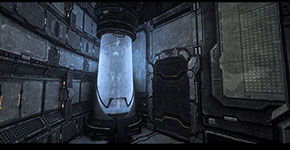 Beyond it, we see a lab, with a giant liquid-filled cylinder and control panels next to it. Within the cylinder is an unconscious creature, humanoid yet dangerous and alien. The woman’s voice in our headphones informs us that she’s setting our guns to stun mode, and we need to break the creature free and stun it so our retrieval team could safely take it away.
Beyond it, we see a lab, with a giant liquid-filled cylinder and control panels next to it. Within the cylinder is an unconscious creature, humanoid yet dangerous and alien. The woman’s voice in our headphones informs us that she’s setting our guns to stun mode, and we need to break the creature free and stun it so our retrieval team could safely take it away.
Julie shoots the cylinder. Little yellow splashes of light explode where her projectiles hit the glass. I don’t really see if that’s having an effect, so I take shots at the control panels next to the cylinder. Still nothing, at least not that I notice. So I walk towards the controls. Do I have to activate them manually?
The glass shatters. Something we did woke it up and broke it free. It leaps onto the floor, hissing at Julie just a few feet away. We both shoot it at different angles. It leaps away from the crossfire, onto the far wall above a closed door. We keep firing, and it succumbs to the stunning blasts. It falls off the wall and rolls onto the middle of the floor with a thud at my feet.
“Good work,” the voice tells us, explaining that we’re done and the creature has been stunned and tagged. The far door opens.
I have to step over the creature. I deliberately reach out with my foot. Of course, there’s nothing there. I didn’t expect there to be. But I’m staring at the creature with my own eyes, and I find myself stepping over it anyway on my way to the door. What am I going to believe, my brain or my own eyes?
The Matrix has you.
We step through the door, go down a short hall, and find ourselves back in the entry area. The voice in our headsets says, “You went through that really fast. You still have time left. Do you want to go again?”
“Oh, yeah!” I answer. “Actually, can we try the temple out?” That’s their other experience.
“Sure!” she says, brightly.
In about one minute, we’re in a completely new adventure. As different as night and day from the last one. Our guns are replaced (eventually) with a torch, which we can actually move about and stick in dark nooks and crannies to illuminate them. We’re no longer soldiers , but ghostlike translucent mesh figures exploring an ancient temple, full of sights, sounds, heat from fires, mist from a waterfall, and… Well. It’s another story. A whole new adventure.
I never could believe my eyes.
There were glitches. The walls didn’t line up perfectly at times. This made it hard to pick up the torch from a sconce on the wall, or to activate an elevator with my palm. These are definitely issues that need to be addressed before launch. The texturing on the temple looked a little painted-on at times. Probably to keep the frame rates running at top speed. Maybe with more powerful computers for the final release, that can be corrected with better materials.
But that’s all the game-developer in me analyzing things. While I commented occasionally on this, what usually came out of my mouth were things like, “Wow!” and “This is amazing!” and “Holy crap!” I was going through the corridors of an alien research lab, or the twisty architecture of an ancient temple! Even making note of these quirks felt like being handed a wad of money and complaining that the bills weren’t new or crisp enough. Minor criticisms aside, they’ve nailed it.
And no, we didn’t experience any motion sickness at all.
The Void marries virtual reality technology with physical effects. They use mist machines, fans, heaters, props, walls, cobwebby threads, and a vibrating platform and probably a lot more to supplement the sights and sound provided by the VR gear. On top of all this, it’s fully interactive, so it’s not like you are just moving through a movie or riding a thrill ride at Disneyland. It responds to your actions in real-time. You are dropped into a virtual world. You get to own it, for a few minutes. It doesn’t feel like technology when you are in it – it’s a place. The fact that two completely different places could be experienced inside the confines of the same 30-foot by 30-foot maze inside some office building says a lot about the possibilities.
Those of us who grew up reading the “Dream Park” series or watching the holodeck sequences in the later Star Trek episodes wondered if the technology would ever get here to allow us to live out fantasies like that. The Void is proof-of-concept that the technology is here, now. It may not be fully polished yet for the mass market, but if this is as rough and as primitive as it will ever be from here on out, we’re finally seeing what virtual reality entertainment has been promising for decades.
Filed Under: Geek Life, General, Impressions, Tech - Comments: 8 Comments to Read
RPG Design: Level-Limited Loot
Posted by Rampant Coyote on November 12, 2015
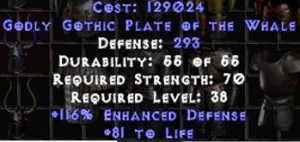 In principle, for single-player role-playing games, I’m against the idea of having level minimums on items. This is a thing that came up in multiplayer CRPGs years ago, primarily because experienced players could “twink” a lower-level character with their high-level hand-me-downs and completely wreck the math and balance for the less experienced character.
In principle, for single-player role-playing games, I’m against the idea of having level minimums on items. This is a thing that came up in multiplayer CRPGs years ago, primarily because experienced players could “twink” a lower-level character with their high-level hand-me-downs and completely wreck the math and balance for the less experienced character.
That’s a special case where it’s somewhat more understandable. But in general, if it can be avoided, I think it should. There are two main reasons:
#1 – Even in games that are level-based, “level” doesn’t really mean anything concrete in the setting – it’s simply a game rule construct. It’s an abstract concept of character development. Why would a warrior not be able to wield a particular sword until he’s defeated six more monsters? What is that supposed to represent? Some magical level of renown or worthiness?
#2 – My general design philosophy is that if you earned it, you should be able to use it. With some noteworthy qualifications and exceptions. But if you were powerful enough to defeat the guardian, you should be powerful enough to use what it was guarding.
Neither are hard-and-fast rules. Again, conceivably the concept of “level” might exist outside of the rules. And I’m not quite so dogmatic (yet) about an item being outside of a character’s field / expertise / understanding / physical ability. It makes sense that a 98-pound weakling might not be able to wield a top-heavy two-handed sword. Or that a warrior without a high-school education might have trouble using a scientific calculator.
But hey, if a 3rd level thief is able to sneak into the elder dragon’s chamber and make off with a super-powerful ring of artifact level that has can also render him invisible… hey, more power to him. Enjoy.
Now how about multiplayer games? This kind of rule irritated me a lot when playing the Borderlands series, since it felt like I was always looting stuff a level or two too high for me. But it was always potentially a multiplayer game, and thus twinking was an issue. Not only would a level 50 gun in the hands of a level 3 character make most of the fights boring, but it would also make all other loot you’d find the next 47 levels pretty close to meaningless.
I’m not saying there aren’t better solutions available, just that it’s *a* solution to a problem.
But I still don’t like it.
Filed Under: Design - Comments: 5 Comments to Read
Fallout What?
Posted by Rampant Coyote on November 11, 2015
I haven’t even bought it.
I’ve not bought The Witcher 3, either. For the same reasons.
Mainly: They will be my reward for shipping Frayed Knights 2.
I know me. I know I will binge-play these games for 100+ hours, and I cannot afford that time right now. Especially since I’m in the critical path with a couple other people waiting on me.
I’m still playing games, in short increments. I think that’s important. Especially retro-gaming old RPGs. I’ve dipped my toe back into the classic D&D RPGs recently released by GOG.COM. The funny thing is that I still have to be careful to avoid over-indulgence in these games, too. Sometimes they require a total party wipeout for me remember to check my watch, but those games tend to be deadly enough to make that a regular event.
So… sometime next year? 🙂
Filed Under: General - Comments: Read the First Comment
The Twilight Zone Influence
Posted by Rampant Coyote on November 10, 2015
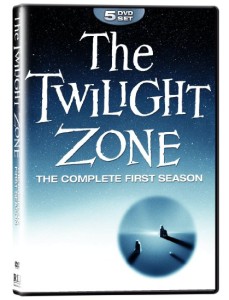 Over the weekend, at the Local Authors & You event, I chatted with author David West for a few minutes. We’d been on the same row at Comic Con a couple of months ago. He also writes some cool, weird stories running across several subgenres of speculative fiction. (His latest anthology was just released a few days ago: Whispers from the Dust). At some point, our conversation turned to The Twilight Zone, and how much both of us were influenced by that show.
Over the weekend, at the Local Authors & You event, I chatted with author David West for a few minutes. We’d been on the same row at Comic Con a couple of months ago. He also writes some cool, weird stories running across several subgenres of speculative fiction. (His latest anthology was just released a few days ago: Whispers from the Dust). At some point, our conversation turned to The Twilight Zone, and how much both of us were influenced by that show.
Seriously, if you haven’t watched the original TV series — which was over before I was born — and you have something like Netflix, watch it! Seriously. I’m still amazed at how many episodes I haven’t seen. While the quality of the episodes varies greatly, there are some fantastic gems in there.
David and I both noted how many of our favorites were written by Richard Matheson. He passed away recently, but his legacy is impressive. He penned the original novel I Am Legend, the basis of four movies; A Stir of Echoes (which became one of my favorite spooky movies, perfect Halloween watching), Bid Time Return (made into the movie Somewhere In Time), all three short stories used for the cult classic movie Trilogy of Terror (although people only remember the final one, Amelia, adapted directly to a screenplay by Matheson. It’s the one with the little Zuni Doll that comes alive.)
He also wrote numerous short stories, many of which were adapted for The Twilight Zone. I’ve read at least one of his anthologies, and it’s generally awesome stuff. Some of my favorite Twilight Zone episodes penned by Matheson or based on his stories are: “Little Girl Lost,” “A World of Difference,” “A World of His Own,” “The Invaders,” and “Nightmare at 20,000 Feet” (which was included in the 1980s movie).
 When I was a kid, the show aired on Friday nights at 11:00, I think. I was eleven or twelve. The first episode I ever watched was “The After Hours.” The one with the mannequins. It was amazing. I didn’t know people actually wrote stories and made TV shows like that. It was like my weirdest dreams and dark fantasies were not only shared, but turned into a TV show. I was hooked. And I think it opened my mind to weird ideas… I no longer needed to suppress them because they were too bizarre. My Star Wars action figures went through some really weird adventures after that.
When I was a kid, the show aired on Friday nights at 11:00, I think. I was eleven or twelve. The first episode I ever watched was “The After Hours.” The one with the mannequins. It was amazing. I didn’t know people actually wrote stories and made TV shows like that. It was like my weirdest dreams and dark fantasies were not only shared, but turned into a TV show. I was hooked. And I think it opened my mind to weird ideas… I no longer needed to suppress them because they were too bizarre. My Star Wars action figures went through some really weird adventures after that.
Some other favorites of mine: “Jess-Belle,” “It’s a Good Life” (also featured in the movie), “Five Characters in Search of an Exit” (sort of a familiar theme with “The After Hours”), “Time Enough at Last,” and of course the infamous “Living Doll” (“I’m Talky Tina, and you’d better be nice to me!”). Surprisingly, on a rewatch of “The Monsters are Due in Maple Street,” I found it pretty forced and lacking. It’s considered one of the best, but… meh.
They keep trying to make shows that follow this format – self-contained, stand-alone episodes with completely different casts and characters. I haven’t known any that have lasted long, and even Steven Spielberg has made a go at it, so it’s not due to lack of ability or influence. It’s too bad. Maybe it’s for the same reason as why “The Monsters are Due on Maple Street” falls flat on me now… there’s just not enough time to develop believable characters and situations for more than a couple of characters. I think more importantly, people tune in regularly to a show because they are invested in characters and a story… and standalone episodes don’t offer that. The best we could do was something like The X-Files where each story was (mostly) a standalone, Twilight Zone-esque situation, but the show followed common characters investigating these incidents.
Although… TV is going through yet another upheaval, now. It’s no longer such a scheduled, weekly event as it once was. People tend to record and watch on their own time, and some (popular!) shows are being produced directly for the Internet, released a full season at a time (Hello again, Netflix!). So maybe we’ll see more of this again sometime.
In the meantime, we’ve got anthologies of weird stories by guys like David West, and Xchyler’s recent Beyond the Wail. (I know my own story, “Cold Spot,” was somewhat influenced by The Twilight Zone). I wonder how many other authors, filmmakers, and game developers were influenced by this awesome TV series…
The cool thing is that more still can be. The show is still quite watchable, proving how a good story doesn’t need elaborate special effects to be awesome.
Filed Under: Geek Life - Comments: Read the First Comment
